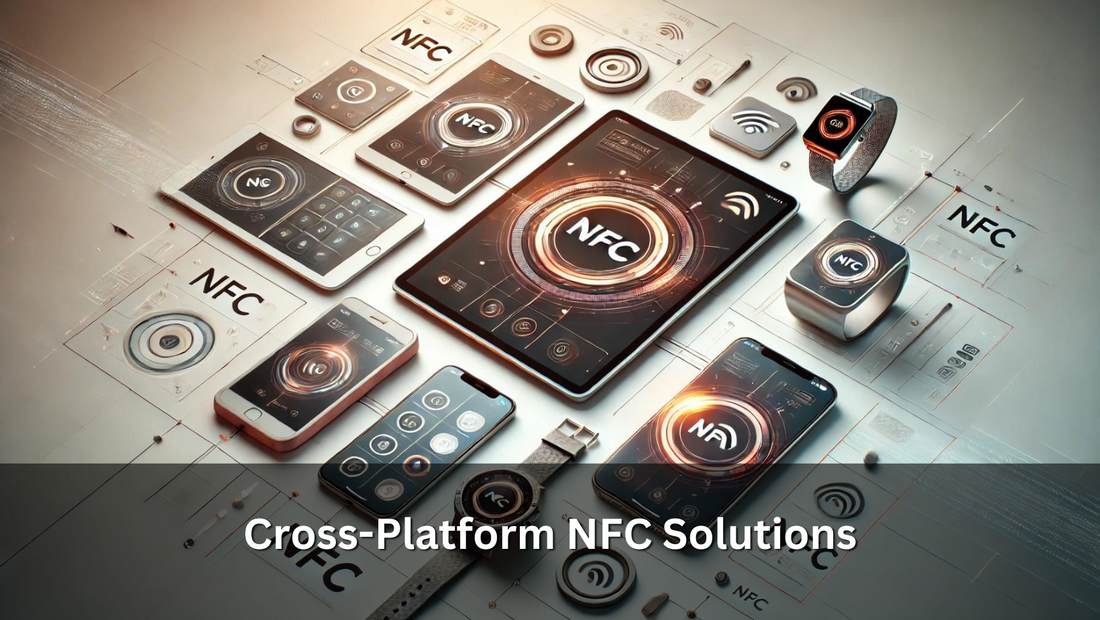Cross-Platform NFC Solutions

Contents
Introduction to NFC and Cross-Platform Security
Near Field Communication (NFC) is a wireless technology designed for short-range data exchanges between devices. Initially developed for contactless payments, NFC has grown to support a wide array of applications, including cross-platform security. This technology is now integral to various devices, such as smartphones, smartwatches, and tablets, allowing them to communicate securely and efficiently. NFC's ability to maintain secure connections across different platforms makes it a vital component in modern digital ecosystems. By incorporating advanced security measures like encryption and tokenization, NFC ensures that data exchanges remain safe and reliable across all platforms.

How NFC Works Across Platforms
NFC technology enables seamless communication between various devices by using radio waves to establish a connection when they are in close proximity, typically within a few centimeters. This short-range communication is a critical security feature, minimizing the risk of unauthorized access. NFC works across platforms by standardizing communication protocols, allowing devices like smartphones, tablets, and smartwatches to interact effortlessly regardless of their operating systems. When two NFC-enabled devices come close, they automatically establish a connection, allowing data to be exchanged securely and instantly. This cross-platform compatibility is made possible through a combination of software and hardware standards, ensuring that NFC can be used universally, from payments to data sharing, across different devices and platforms.
Security Features of NFC Technology
NFC technology incorporates several advanced security features to protect users and their data during transactions and interactions. One of the primary security measures is encryption, which ensures that data transmitted between devices is encoded and can only be decrypted by the intended recipient. This prevents unauthorized parties from accessing sensitive information. Another crucial feature is tokenization, which replaces actual card details with a unique digital token during transactions. This token is useless if intercepted, adding an extra layer of security.
NFC also benefits from short-range communication, which inherently reduces the risk of interception since devices need to be in close proximity to communicate. Additionally, most NFC-enabled devices require user authentication—such as a fingerprint, passcode, or facial recognition—before a transaction can proceed, ensuring that only the authorized user can initiate the exchange. These security features make NFC a robust and reliable choice for secure cross-platform interactions.
Common Security Threats to NFC and How to Mitigate Them
While NFC is generally secure, it is not immune to certain threats. One common risk is eavesdropping, where an attacker intercepts the communication between two NFC devices. However, this risk is mitigated by the short range of NFC, typically less than 4 cm, and the use of encryption during data transmission. Another threat is relay attacks, where attackers capture and relay communication between devices to perform unauthorized transactions. This can be mitigated by implementing user authentication, such as requiring a PIN or biometric verification before completing a transaction.
NFC skimming is another potential threat, where attackers attempt to read data from an NFC-enabled device without the user's knowledge. Users can protect themselves by disabling NFC when not in use and avoiding unknown or untrusted NFC tags or terminals. By being aware of these threats and taking preventive measures, users can significantly reduce their risk.

Case Study: NFC in Multi-Device Ecosystems
In a multi-device ecosystem, NFC technology plays a crucial role in ensuring seamless and secure communication between various devices, such as smartphones, tablets, and wearables. For example, in a smart home environment, NFC can be used to synchronize settings across multiple devices with a single tap, enabling unified control over lights, thermostats, and security systems. Additionally, in healthcare, NFC-enabled devices like smartwatches and medical monitors can securely share patient data with smartphones and tablets, ensuring that critical information is always accessible. This cross-device interoperability showcases NFC's ability to create a cohesive and secure environment, enhancing user experience across platforms.

Future Trends in NFC for Cross-Platform Security
The future of NFC technology is poised for significant advancements, particularly in enhancing cross-platform security. Emerging trends include extended range capabilities, which would allow NFC to operate over greater distances while maintaining security, and multi-purpose tapping, enabling a single tap to trigger multiple secure actions, such as payments and loyalty program updates simultaneously. Another promising trend is wireless charging via NFC, which could further secure and streamline the charging of various devices. Additionally, NFC is expected to play a key role in digital product passports for sustainability, securely managing product data across platforms. These innovations will continue to strengthen NFC's role in secure, cross-platform communication.
Conclusion
NFC technology has become a cornerstone of cross-platform security, enabling secure and seamless communication between various devices. As NFC continues to evolve with new trends and advancements, its role in safeguarding digital interactions across platforms will only grow. Embracing NFC is essential for ensuring a secure, interconnected future.









